Dave Douglas – Marching Music (Greenleaf)
Dave Douglas plays the trumpet, but that is becoming a relatively small part of how I experience him. Douglas composes music and brings together bands, runs the Festival of New Trumpet Music and Greenleaf Music. He also hosts a podcast of careful conversations with creative improvisers (“A Noise from the Deep”), and he has become a voice for political activism through his music. So many of those elements weave into Marching Music, released in November. Douglas is not new to working across generations and genres. However, he still can surprise, and his rhythm section here is guitarist Rafiq Bhatia, bassist Melvin Gibbs, and drummer Sim Cain. Gibbs and Cain are connected through playing with Henry Rollins. But the resumes of all the players criss-cross through downtown New York music of various kinds: Arto Lindsay, Marc Ribot, Ronald Shannon Jackson, Elliott Sharp, Glenn Kotche, Vijay Iyer, Sonny Sharrock.
The music here is a mixture of heavy and luminescent, with grooves and atmosphere sharing space, with engaging melodies (“Whose Streets”) and sonic exploration (“Safe Space”) in balance. Bhatia’s control and massive range of tones are astonishing, and Cain handles both color and odd time signatures with aplomb. Douglas’ notes tell us the music should be a soundtrack to protests and social change. Still, a tune like “Climate Strike” is Emma Goldman-esque—optimistic and dancing, qualities utterly necessary for any revolution.

Rob Mazurek – Dimensional Stardust (International Anthem/Nonesuch)
Cornet player Rob Mazurek is an important voice in Chicago’s vibrant scene, an internationally recognized voice in creative music. His Exploding Star Orchestra is really an all-star group, with the new Dimensional Stardust featuring Chicagoans such as cellist Tomeka Reid, Nicole Mitchell on flute, guitarist Jeff Parker, drummer Chad Taylor, and trumpeter Jaimie Branch, as well as New York-based stars Joel Ross on vibes and pianist Angelica Sanchez. Orchestrated precisely and inventively for 11 pieces, the suite uses strings (violin, cello, bass, guitar), percussion (two “drummers”, piano), winds (flute and trumpet), voices, and electronics in an utterly unforced blend.
This the new jazz at its best, with complex composition easing seamlessly into improvising, classical notions slipping into jazz and hip-hop/electronics as well. On “The Careening Prism Within (Parable 43)”, you hear Mitchell improvising on flute as the strings and Ross’s vibes play a percussive figure. Parker lays into some distortion that invites Branch to set loose one of her sonic barrages of brass—but all within a carefully modulated arrangement that uses spoken-word elements from Damon Locks. Every track begs for several rehearings, and you find yourself wanting to commit to day-after-day listening. Mazurek himself plays very little on the recording, but that’s not what it’s about. As a composer and arranger, he dazzles.

Christian Scott aTunde Adjuah – Axiom (Ropeadope)
Christian Scott aTunde Adjuah is hardly alone in being a trumpet player exploring the post-1968 musical direction of Miles Davis, music undervalued for decades and putting it in conversation with hip-hop, West African music, and other sources. Axiom is a live recording from the Blue Note in New York from March 11-15, 2020, just before the pandemic shut everything down. It comes out of his 2019 studio recording, Ancestral Recall, though it doesn’t feature vocals. Instead, the live date centers the power and joy in a rhythm section featuring Lawrence Fields’s piano as well as a djembe player.
Scott plays many clarion solos, but Elena Pinderhughes is equally dramatic and powerful on flute. The ensemble passages she is a part of bring to mind the best of the CTI records from the 1970s that featured Hubert Laws, but everything else here is less glossy than warm and lived-in. Fields never sounds like Robert Glasper on piano or Rhodes. Still, he achieves a similar conjunction between expansive pianism (he channels McCoy Tyner on “Songs She Never Heard”) and the hip, funk layering of Herbie Hancock (on, say, the cover of “Guinnevere”—the set’s plain nod to Miles, who also covered it).
The power in these performances is how they blossom, expand, and remain emotionally powerful even in these open jam modes. The 15-minute “West of the West” has a potent Blue Note Records punch, for example, with drummer Corey Fonville sounding like a modern Tony Williams and Alex Han’s alto saxophone stretching out with as much imagination as Kenny Garrett on a good day. It’s a great band—and for a live album, that’s the whole game.

Matthew Shipp – The Unidentifiable (ESP-Disk) / Live in Nuremberg (SMP)
Pianist Matthew Shipp made a solo piano recording, The Piano Equation, that I considered the greatest music of 2020. I heard it as a distillation of his brilliant past accomplishments as a player, utterly steeped in the jazz tradition but also freed from any constraints that “tradition” puts on artists. Shipp turned 60 in 2020, so maybe it was likely to be a banner year. His trio recording The Unidentifiable with bassist Michael Bisio and drummer Newman Taylor Baker is also revelatory: delicate (“Blue Transport System”), dancing (“Phantom Journey”), classic (the title track, which also channels a bit of McCoy Tyner, who died in 2020), and—yes—free (“New Heaven and New Earth”).
In addition, Shipp released a live duet recording made with saxophonist Ivo Perelman at the Nuremberg “The Art of Improvisation” festival, and Live in Nuremberg (SMP) that is also mind-boggling. Shipp and Perelman are experienced practitioners of the free improvisation in the duet format, together and with others, but this hour-long jam, followed by an encore, represents the kind of magic that proves the existence of extrasensory perception. These artists seed each other with ideas in a breathtaking game of leap-frog, anticipating each other, coming together with grace, playing cat-and-mouse, venturing into long stretches of counterpoint that sounds daring and jaunty, inevitable, and joyous. Shipp is fearless and couldn’t play a cliche if he tried to, and Perelman has a mastery of intonation and tone that allows him to use microtonal technique without every sounding “out of tune”. Whew and wow and WONDERful. Musician of the year, ladies and gentlemen.

Immanuel Wilkins – Omega (Blue Note)
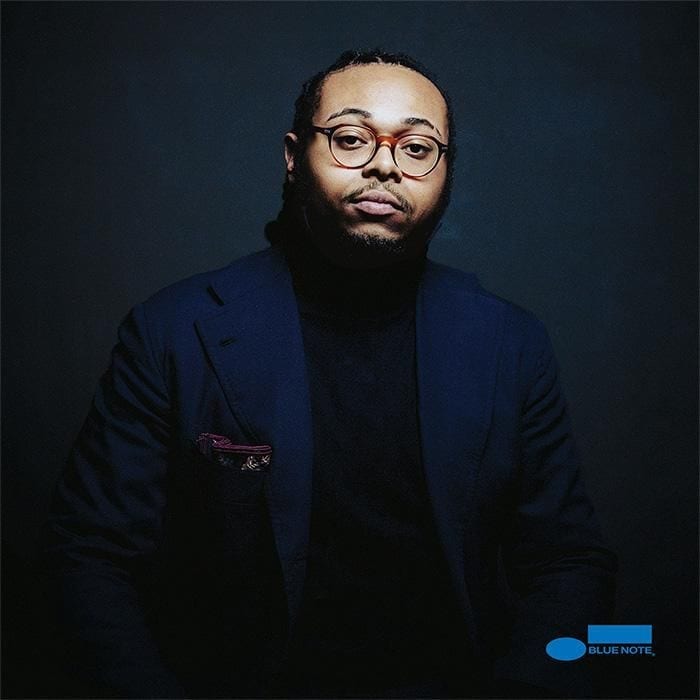
Immanuel Wilkins is a 23-year-old making a debut on Blue Note, and I think I just didn’t want to credit him with being the Big New Thing, particularly in a year where so many young musicians (several of whom Wilkins regularly gigs with) were dazzling. But Omega deserves any and all hype. The leader plays alto saxophone with a light but adventurous touch, as if he has listened to players on his instrument as different as Kenny Garrett, Darius Jones, and Steve Lehman and somehow assimilated them all. And although he sounds like a very complete player for his age, the real wonder is his working band, which features the also-super-young pianist Micah Thomas, Darryl Johns on bass, and drummer Kweku Sumbry.
Everything swings—this is Blue Note—but the new jazz of hip-hop rhythmic inclinations, complex time experiments, and compositional complexity is on this record too. As well as the to-be-expected-from-Gen-Z disregard for any distinction between playing inside and outside the harmonic rules. Thomas is the maximalist in the band, and his propulsive, crashing, two-handed improvising makes Wilkins’s slippering playing that much more delicious.

Very Much Better
Asher Gamedze – Dialectic Soul (On the Corner)
Drummer Asher Gamedze is South African, and wow, is it refreshing not to hear him playing modern “spiritual jazz” like two of his countrymen reviewed in a category lower on this list. Dialectic Soul features a piano-less quartet in the Ornette Coleman model (trumpet, tenor sax, bass, drums) and vocals—sometimes spoken rather than sung. At times the players are working freely and some atonally (“State of Emergence”). At other times they groove and play in a tonal manner that connects American blues to South African patterns of tonality (“Interregnum”).
As a drummer, Gamedze is light and propulsive, building grooves but always functioning melodically as well. “Eternality” has his tuned toms popping in melodic dialogue with the harmonized horns, even as he keeps things cooking as if he were Elvin Jones. “Hope in Azania” channels Abdullah Ibrahim and his jazzifying of the township groove. That this is not another imitation of Pharaoh Sanders’s “The Creator Has a Master Plan” has been, however, lost on some critics who apparently did not listen to the album itself: Pitchfork’s reviewer invoked Sanders as the primary influence, and NPR used the word “spirit” and the phrase “astral jazz” in its first two sentences. To my ears, Gamedze is on a different track, channeling his culture and a different element of jazz history and doing it with more elegance than many of his peers.

Jyoti – Mama, You Can Bet! (SomeOthaShip Connect)
Jyoti is the name under which Georgia Anne Muldrow occasionally issues music, and Mama, You Can Bet! is a Jyoti album that will help you rethink music in the moment. Muldrow is mainly thought of as a hip-hop auteur in the Madlib mode, and Jyoti is the name of her “jazz band”, though the only musician other than her alto saxophonist Lakeica Benjamin on a single track. Is it “jazz”? Who cares. It is brilliant and feeling in equal measure, with Muldrow’s terrific soul/jazz voice taking an unusual role at center stage. On “Orgone”, she is at the piano singing, almost in a Nina Simone mode. On the title track, she puts together an off-kilter kind of acoustic funk to support multi-tracked singing with a cool choral effect surrounding her hip solo line.
On “This Walk”, Muldrow coos a sensuous tune against a heartbeat rhythm. However, most of Mama is that rare thing: a hip-hop record that sounds and feels and acts like jazz, or maybe the other way around. The mostly short instrumental tracks don’t contain much jazz improvisation, but they are awash in swing, luscious harmony, and original melody. Add to that two reimaginings of Charles Mingus tunes (“Bemoanable Lady Geemix” and “Fabus Foo Geemix”) developed as part of a project at the Kennedy Center in conjunction with Jason Moran, and you have a recording that has every right to the attention of “jazz” listeners who want to understand the direction of creative music when the great 20th-century tradition of Black American Music collides with new tech in a new era.

Charles Lloyd – 8: Kindred Spirits—Live from Lobero (Blue Note)
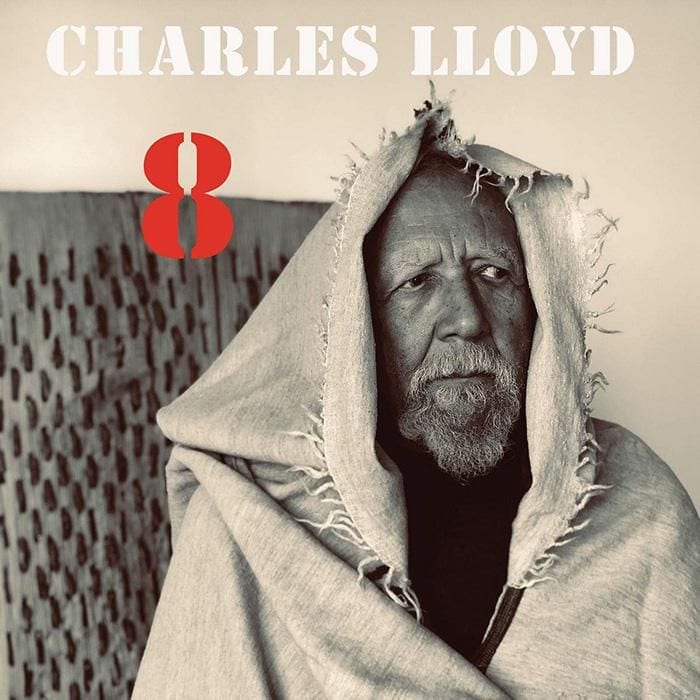
Charles Lloyd has a reasonable claim to have been there back in the ’60s and ’70s when a form of pop/jazz spiritualism was actually happening in the moment. He may have been one of the earliest Coltrane mimics, and his playing has moved onward to things and back again five times since then. His latest comeback (he is now 82) has him recording for Blue Note and playing with many of the best musicians in a generation a few behind his own. 8: Kindred Spirits—Live from Lobero was recorded in Santa Barbara with Gerald Clayton on piano, guitarist Julian Lage, Reuben Rogers’s bass, and drummer Eric Harland.
It serves up two performances around 20 minutes and two around ten—but there is virtually no sense that this band meanders, with each soloist commanding attention with creativity and drama. Lage is the standout, playing a modal solo on “Dream Weaver”, for example, that is truly masterful. “Part 5, Ruminations” is 18 minutes of free improvisation from a set of musicians who don’t practice this way of playing all the time. And maybe that’s why it works so well?

Andy Milne – The Remission (Sunnyside)
Andy Milne is a pianist who has often been in the thick of experimentation with form and with jazz collision with hip-hop in certain forms. It’s cool, then, to encounter The Remission, on which he leads a piano trio (with John Hebert on bass and drummer Clarence Penn) assaying two jazz standards and eight original tunes. It is a pleasurable program, with the explorations relatively brief and concise. Some of the compositions are simply beautiful (“Vertical on Opening Night”, with its generous room for Hebert at the start; the wide, dark intervals of “The Call”). Others are more angular and hopping, but Milne doesn’t quite sound like any other pianist on the scene today. This band presents him in a way we haven’t heard before. The highlight may be his take on “Sad to Say” by Benny Golson, which allows the band to invent with extraordinary empathy and freedom.

Tani Tabbal – Now Then (Tao Forms)
Drummer Tani Tabbal has roots in Chicago, Detroit, and New York. A resume connects those dots, with dates supporting Roscoe Mitchell, Sun Ra, Geri Allen, James Carter, David Murray, and the band Griot Galaxy. However, his discography as a leader seems to include only self-released recordings that too few people got to hear. Now Then comes from his long-standing trio with bassist Michael Bisio and alto saxophonist Adam Siegel, performing Bisio and Tabbal tunes—quick sketches that open out into extended, mostly free improvisation. However, the band rarely plays atonally or harshly, with the rhythm section swinging elastically and dramatically and Siegel being songful even if he isn’t following chord changes.
“Sun History Ra Mystery”, for example, creates a blues-drenched mood with Bisio playing a gorgeous low bass line as the leader shimmers cymbals, and the alto begins a solo so quiet and airy it could easily be mistaken for clarinet. “Oh See OC Revisited” is an appealing melody with Ornette Coleman’s DNA in it (hence the title), which takes off into a neat OC-esque swing. Some of the material is more out there (“Scrunch” begins with co-squeaking by bass and sax and resolves into something a wee bit tonal after four minutes or so). But the accomplishment here is like the music of William Parker: there is plenty of freedom and plenty of blues grooving too. They’re friends in these good hands.

Better
Noah Haidu – Doctone (Sunnyside)
Noah Haidu is one of many pianists who view the late Kenny Kirkland as the critical pianist and composer of his generation. Doctone is devoted entirely to his tunes, with the wonderful drummer Billy Hart complimenting every performance. Haidu has dedicated considerable energy to learning Kirkland’s oeuvre and performing the repertoire, but this program/band was not over-rehearsed. What makes the date stand out is Haidu’s bold decision to include three very different saxophonists on more than half the tunes.
Steve Wilson plays his wonderfully soulful soprano on “Steepian Faith”, for example, in jabbering, odd-meter conversation with the rhythm section before the swing kicks in. The brooding “Blasphemy” includes some atmospheric synths, but it is Jon Irabagon’s dark-timbre tenor saxophone solo—surging and modern—that defines the performance. And Gary Thomas, the brilliant Baltimore saxophonist and flutist who was a prominent voice in Steve Coleman’s circle 25 years ago, sounds both light and dark in his no-nonsense solo on “Mr. JC”.
Both Irabagon and Thomas play on “Fushia”, a favorite track that conjures the dancing joy of Kirkland’s spirit and allows Haidu to show off his imagination in an extended solo. The result is relaxed mainstream jazz that, like Kirkland, could be in danger of being overlooked in a jazz landscape that tends, always, to favor the forward-looking.

Adam Kolker – Lost (Sunnyside)
Adam Kolker is legitimately under-appreciated, a saxophonist with range and imagination. He has been around the New York scene for three decades, and his contributions include work with Ray Barretto, Maria Schneider, Bobby Previte, and many others. As a leader, he works with top-notch players such as Steve Cardenas, Kevin Hays, Paul Motian, John Abercrombie, and John Hebert. Lost puts tenor and soprano saxophone atop the rhythm section of Bruce Barth (piano), Ugonna Okengwo (bass), and Billy Hart (drums), working mainstream jazz to fine effect.
Kolker programs a Gil Evans tune, “The Time of the Barracudas”, and two of Wayne Shorter’s most compelling themes (“Lost” and “Dance Cadaverous”) beside two standards and two originals, making this the kind of classic jazz date that delivers. “Flips”, by Kolker, is a witty and delicate melody with a Monk-ian flavor that puts Barth and the leader in jabbing dialog, and Kolker’s “Hidden Treasure” is an ideal feature for his burnished tone on tenor. Like so much here, the playing on this tune is sly and smart, exemplary modern jazz that, sure, might have been recorded 40 or 50 years ago, but that still sounds fresh and fantastic.

Lionel Loueke – HH (Edition)
Guitarist Lionel Loueke is an out-sized talent who has played with Herbie Hancock, Chick Corea, Sting, Terence Blanchard, Cassandra Wilson. Loueke seems to be a favorite of the very best and biggest. As a solo artist, his best work takes advantage of what makes this Benin native unique: a grounding in African pop and jazz and a light guitar sound that often combines with his singing uniquely. His new HH is a tribute to Hancock—just Loueke and his voice playing Hancock tunes in a way that only Loueke could.
Classics like “Tell Me a Bedtime Story”, “Cantaloupe Island”, “Watermelon Man”, and “One Finger Snap” are here, as are some of his great tunes from the later electric/funk albums—”Hang Up Your Hang-ups” and “Come Running Back to Me”. And, yes, “Rockit” too. The charm and brilliance of the recording is its minimalism, with Loueke providing percussion, harmony, and melody simultaneously without any of it sounding like a gimmick. Instead, it sounds like a soulful musician on his couch doing something terrific with amazing source material. There is some overdubbing (or is it looping?), but the larger effect is one of quiet, with Hancock’s kindling and Loueke’s spark.

Jeff Parker – Suite for Max Brown (International Anthem)
Guitarist and all-around force Jeff Parker is another Chicagoan who is utterly immersed in jazz and who, yet, questions it in useful, daring ways. With Tortoise and other bands, Parker operated in more of a “rock” zone, but Suite for Max Brown is an example of his music as an extension of jazz. A follow-up in some ways to 2016’s The New Breed, this recording doesn’t feature a band on most tracks. Instead, it allows the leader to play drums, keyboards, samplers, and to sing, bringing in collaborators as necessary. Even though Parker covers Coltrane’s “After the Rain”, everything here suggests the ways that Parker finds a middle ground between classic jazz and digital music practices.
The brilliance is in how organic and natural is all sounds when listened to as a full document—”Gnarciss” brings in frequent collaborator Rob Mazurek on piccolo trumpet, for example, to add a certain kind of organic sound. Still, that track is preceded and followed by quick exercises in strictly digital storytelling. This is the new fusion, and it leans into the heart, not fast fingers or sonic gloss.

The Sun Ra Arkestra – Swirling (Strut)
The alternative to post-Coltrane jazz spirituality is undoubtedly the music and avant-optimism of the Sun Ra Arkestra. November brought Swirling, the first new recording from the Arkestra in two decades. Now led by longtime 96-year-old saxophonist Marshall Allen since the passing of both Sun Ra (Sonny Blount) and then saxophonist John Gilmore, the band sounds wondrous and joyful. The recording is pristine, and performances are loose but tight, swinging as ever but with fresh arrangements that put vocals (Tara Middleton), tumbling but precise piano (Farid Barron, out of Philly, the Arkestra’s home base), and big band in smiling dialog. Most of the music is from the band’s catalog, but the arrangements are fresh, and Allen added a new original song. In an era in which younger musicians seem self-seriously bent on channeling the spiritual jazz of long ago but then seem to get trapped in imitating it, this group of much older musicians finds the highest minded spirit in playing with deft joy.

Okay to… Whatever
Emi Makabe – Anniversary (Greenleaf)
There isn’t another recording from 2020 ( really any other year) like Emi Makabe‘s Anniversary. She is a singer-songwriter backed by a jazz piano trio—so maybe she shares some DNA with recent artists such as Becca Stevens, Gretchen Parlato, and Emma Franks. But Makabe also plays the shamisen, a Japanese stringed instrument, and sings in Japanese (and English—and wordlessly at times), imbuing her brand of alluring songcraft with a unique sound. Vitor Goncalves adds accordion to his keyboard work, and drummer Kenny Wolleson adds some vibraphone, further expanding the shimmering menu of options, as Makabe weaves through it all gently. Her voice is delicate and breathy, often being matched tonally by Wolleson’s drums, such as on “Chimney Sweeper”, a piece that uses a William Blake poem as a source for lyrics.
Makabe’s music can be aching modern jazz (such as on the harmonically ambiguous “Something Love”, sung without words over just the jazz trio playing at ballad tempo), skittering and busy new jazz that jabs and dances (“Rino”, with a consonant melody and a complex set of interlocking rhythms), or folk-ish music that allows her shamisen to set the band into a different mode (“Flash”). At its best, this music is like a familiar dish enlivened by a new flavor that works around the edge of your meal. Sometimes it sounds just a bit too anonymously lovely for my taste—while others may be waiting for the kinds of poppier hooks that Stevens serves up more readily.

Joel Ross – Who Are You? (Blue Note)
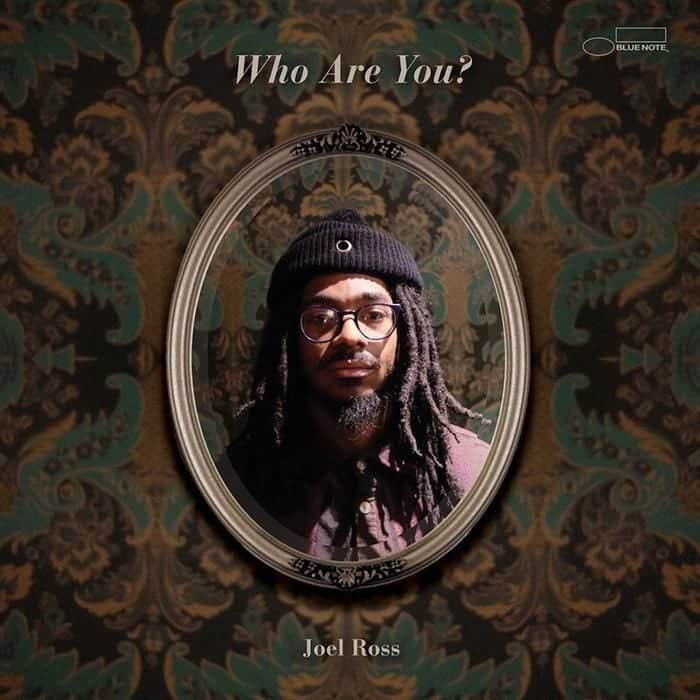
Vibraphonist Joel Ross was last year’s consensus Rookie of the Year, a young musician who was suddenly on a whole lot of terrific recordings and who always made them better. Signed to Blue Note, expectations are high, and his sophomore release Who Are You? asks the right question, I suppose. The best thing about it may be its modesty and clarity; it’s not flashy, and it features his small group of young players with balance: pianist Jeremy Corren, Immanuel Wilkins on alto saxophone, drummer Jeremy Dutton on drums, bassist Kanoa Mendenhall on bass, with harpist Brandee Younger occasionally featured.
The tunes are attractive in the Jarrett/Metheny/Mehldau mode, the playing is nice, and the overall mood is flowing. Somehow, and despite indisputable taste and musicianship, the program is just a bit flat—too nice, too easy-going. When the band tackles Coltrane’s “After the Rain”, with Younger creating a sense of sensuality to it all, the highlight ends up being Corren’s brief section of solo piano rather than the band or its interaction. Ross is a thrilling addition to the scene, but he is still finding the best way to put his voice into my heart.

Nduduzo Makhathini – Modes of Communication: Letters From the Underworlds (Universal/Blue Note)
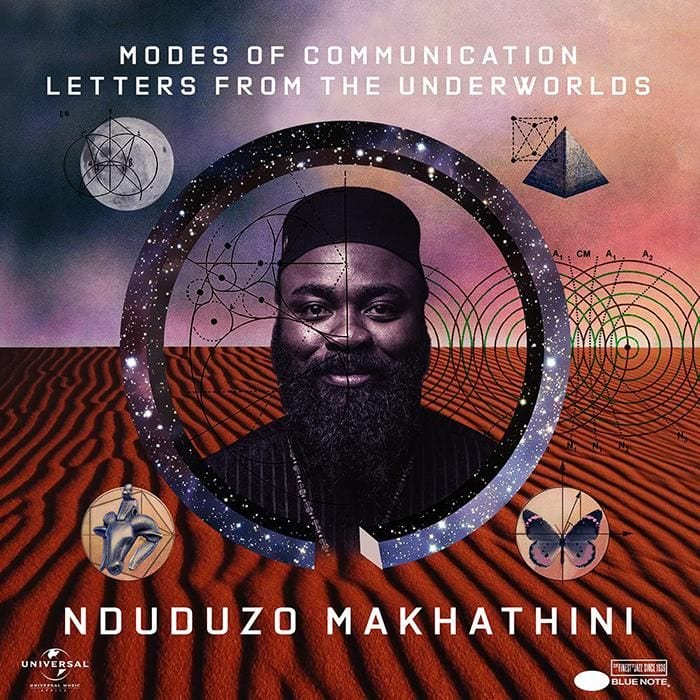
South African pianist Nduduzo Makhathini is a rising star in African jazz. Modes of Communication: Letters From the Underworlds is an intriguing introduction that connects the artist to the obvious influence of Abdullah Ibrahim but also to the “spiritual jazz” sound of 50 years ago from artists like Pharaoh Sanders and as well as the expansive piano jazz of McCoy Tyner from his modern period in the 1970s and 1980s. “Unyazi” and “Indawu” feature big, splashing, Tyner-esque chords and grand modal improvising from alto saxophonist Logan Richardson and tenor saxophonist Linda Sikhakhane.
Plenty of vocals are featured, tilting the affair more toward South Africa, and there are rolling piano grooves that touch on township music. It seems inevitable that Makhathini’s approach might be compared to the Los Angeles music scene as represented by Kamasi Washington—both being interpretations and extensions of a tradition that was, mysteriously, dropped by U.S. jazz musicians in the 1990s. Of course, Coltrane’s influence never ceased, and Mahkathini channels Trane with his “Isithunywa” being a close cousin of “Naima”.
Innovation isn’t everything in art, of course, and the revival of traditions that got short-shrift is its own kind of good work. But Letters from the Underworlds is an act of tribute and extension that sounds, to me, very much like the music that was exceedingly fresh and thrilling two generations ago.

Shabaka & The Ancestors – We Are Sent Here by History (Impulse)
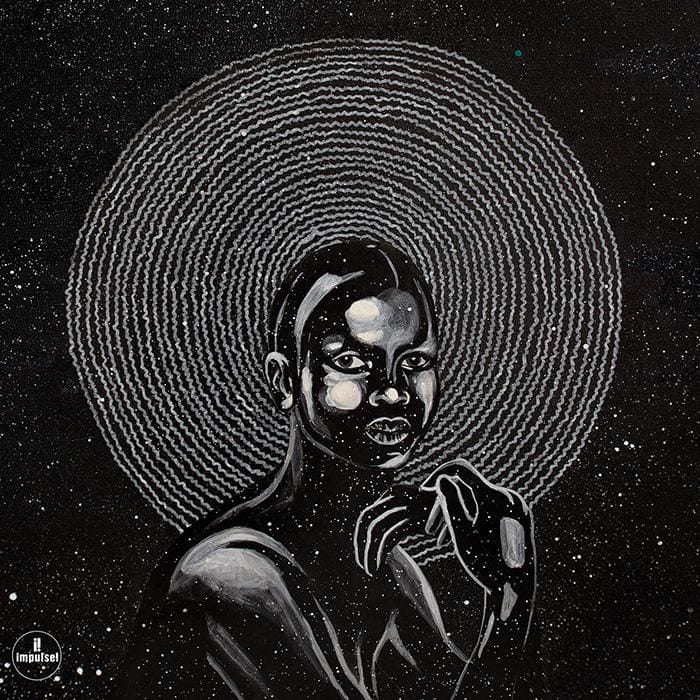
Shabaka & The Ancestors are one of several bands in which British/Barbadian saxophonist Shabaka Hutchings is yet another young musician pursuing a freshly relevant version of the “spiritual jazz” that is historically associated with Pharaoh Sanders, Albert Ayler, and Archie Shepp in the great post-Coltrane wake of the 1970s. We Are Sent Here by History is yet another frequently-hailed-as-great document with much in common with the music being made in the US by Kamasi Washington—with repeated patterns that are layers, ecstatic improvisations for tenor saxophone, and an explicit connection to the politics of that earlier era. Guest keyboardist Nduduzo Makhathini makes an impact on Rhodes and acoustic piano.
Hutchings, however, also draws from South African inspirations that keep the music different enough. The rhythm section of acoustic bass, percussion, and drum kit is the star, with both Hutchings and alto saxophonist Mthunzi Mvubu blowing interesting but fairly standard solos in the general tradition. When you hear a quote directly from A Love Supreme, I suppose you can decide if this is a brilliant reference or, you know, a rehashing of music that really made its impact 50 years ago. The presence of vocals, political messaging, and chanting is what may rivet your ears most, frankly. The love coming from so many critics for this music isn’t off-base, but my ears have heard it all before.

Worse
Diana Krall – This Dream of You (Verve)
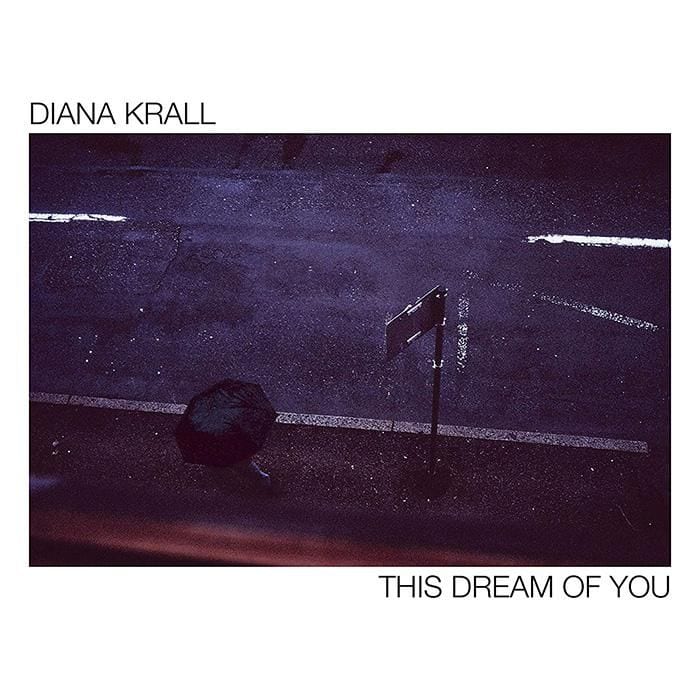
I admire singer and pianist Diana Krall’s style and skill, and clearly, lots of folks agree—she has a huge following. Yet, I keep listening to her recordings with disappointment. She came out with a grab-bag collection this year, a group of recordings from recent sessions with the late producer Tommy LiPuma. This Dream of You is named for the one tune, not from her usual Great American Songbook act—a recent Bob Dylan song that is, yes, a gorgeous interpretation that sounds original and interesting.
It’s not that there’s anything wrong with Krall doing a hiply subtle “Singin’ in the Rain” or a string-section-enhanced “Autumn in New York” at a glacial tempo. That kind of stuff has been the singer/pianist’s bread and butter across a long, tasteful, and profitable career. But when she takes on a song you don’t know by a talent as cranky and angular as Dylan’s, you get the sense that she is adding to the conversation. However, for most of its dozen tracks, this is More of the Same, and the fact that Krall sprinkles in something hipper just proves that she knows it too. I hereby vow not to review another Krall record unless I adore it.

Gil Scott-Heron – We’re New Here (XL Records)

After a sad and difficult decline over decades, Gil Scott-Heron’s final album came out in 2010, masterminded by another producer who got Scott-Heron to show up and contribute stories, blues, and vocals to a session that wasn’t conceived by the artist himself. It was thin gruel—neither the great stuff Scott-Heron used to make nor updating the brilliant artist’s vision. Drummer and producer Makaya McCraven have taken the late Scott-Heron’s input, and “reimagined” it for We‘re New Here, the second remixing of the raw material.
The new recording is a vast improvement, with instrumental accompaniment that sounds pliant, flexible, and wide open in ways that the old Brian Jackson bands that Scott-Heron rolled with could be. McCraven’s tracks sound much more like 2020, of course, with warm cycling bass lines (“New York Is Killing Me”) and pleasantly meandering saxophones or flutes, probing guitar and synths, some sense of organic interest. But, well, this is still a strange end result. Not exactly lipstick on a pig, because Scott-Heron’s words and voice are always riveting and McCraven is a fascinating musician, but the young producer was not able to create a masterpiece from the limited source material.
During the new-year season of best-of-the-year lists, I find myself looking backward—even at a year as difficult as 2020. Time was dilated—I thought I had too much of it but, as usual, there was too little for all the great music.
I named 20 recordings as my favorites of 2020. Here are 20 more pieces of jazz and creative music that I missed or didn’t write about during lockdown, drawn significantly from other folks’ lists of favorites. With many of these, I left them alone because I didn’t think I would adore them. But, as so often, I was mostly wrong. These are the ones that are notable, for better or worse, from wow to whatever.
Note: The recordings are listed alphabetically in each category.


![Call for Papers: All Things Reconsidered [MUSIC] May-August 2024](https://www.popmatters.com/wp-content/uploads/2024/04/all-things-reconsidered-call-music-may-2024-720x380.jpg)



